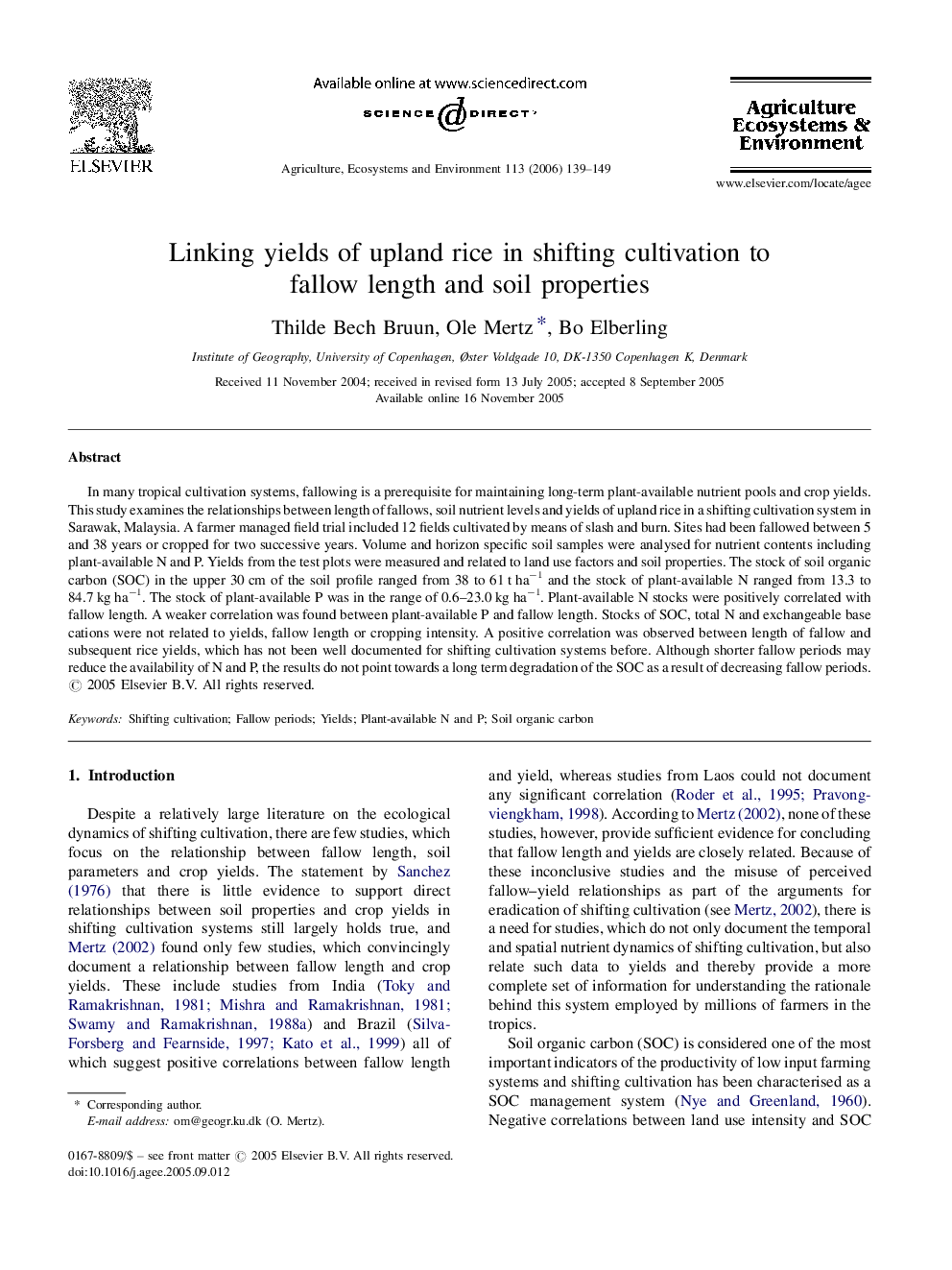| کد مقاله | کد نشریه | سال انتشار | مقاله انگلیسی | نسخه تمام متن |
|---|---|---|---|---|
| 2415963 | 1552150 | 2006 | 11 صفحه PDF | دانلود رایگان |

In many tropical cultivation systems, fallowing is a prerequisite for maintaining long-term plant-available nutrient pools and crop yields. This study examines the relationships between length of fallows, soil nutrient levels and yields of upland rice in a shifting cultivation system in Sarawak, Malaysia. A farmer managed field trial included 12 fields cultivated by means of slash and burn. Sites had been fallowed between 5 and 38 years or cropped for two successive years. Volume and horizon specific soil samples were analysed for nutrient contents including plant-available N and P. Yields from the test plots were measured and related to land use factors and soil properties. The stock of soil organic carbon (SOC) in the upper 30 cm of the soil profile ranged from 38 to 61 t ha−1 and the stock of plant-available N ranged from 13.3 to 84.7 kg ha−1. The stock of plant-available P was in the range of 0.6–23.0 kg ha−1. Plant-available N stocks were positively correlated with fallow length. A weaker correlation was found between plant-available P and fallow length. Stocks of SOC, total N and exchangeable base cations were not related to yields, fallow length or cropping intensity. A positive correlation was observed between length of fallow and subsequent rice yields, which has not been well documented for shifting cultivation systems before. Although shorter fallow periods may reduce the availability of N and P, the results do not point towards a long term degradation of the SOC as a result of decreasing fallow periods.
Journal: Agriculture, Ecosystems & Environment - Volume 113, Issues 1–4, April 2006, Pages 139–149